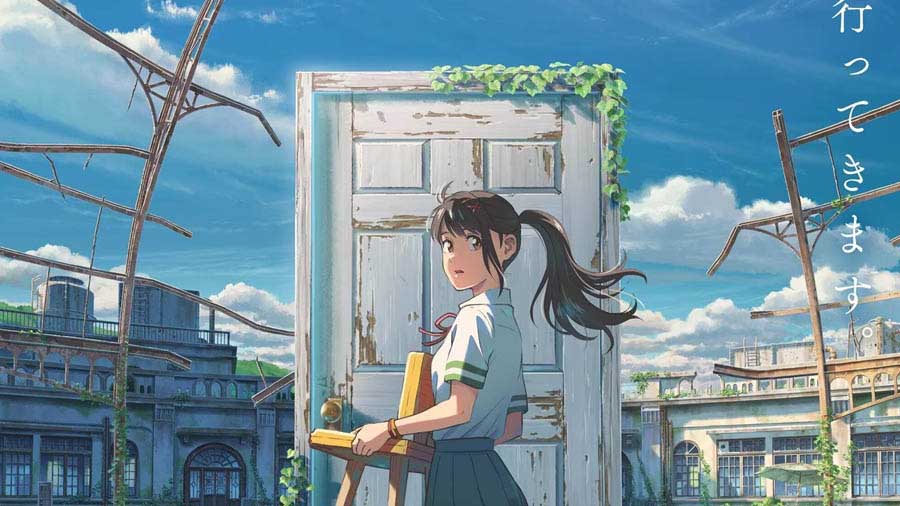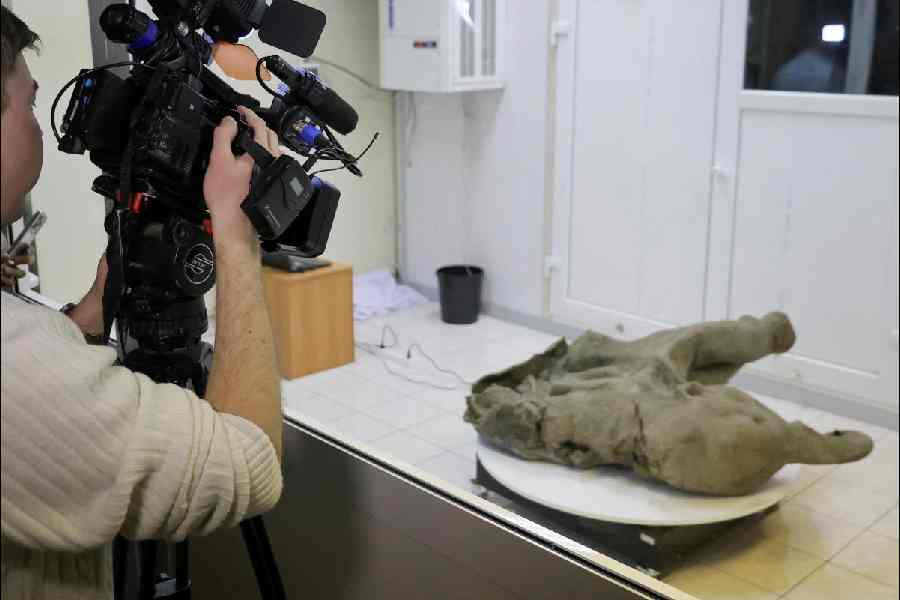“We know life is fleeting, we know we live side by side with death, even then, we wish to live.”
Makoto Shinkai’s latest film, Suzume no Tojimari, is a testament to his legacy, even if its premise of a teenage girl falling in love with a wooden chair all the while chasing a talking cat sounds ludicrous. Suzume should not be compared to Shinkai’s breakthrough works like The Garden of Words or Your Name, as it stands on its own in its juggling of themes, characters and emotions. Shinkai depicts the horror plaguing modern Japan from a fresh perspective in this film. At the end, it becomes a story of trauma healing, depopulation, natural calamity, economic depression and loneliness, all subjects that are well known in the Shinkai verse.
The story is classic Shinkai with a context as rich and as intriguing as ever. Suzume Iwato is a teenage girl who is typical to other heroines of Shinkai’s world. She has struggled with an immense tragedy after losing her mother, a nurse who died in the devastating tsunami of 2011. Despite living with her aunt, Suzume feels lost and alone in the world. That is until one fateful encounter with a mysterious and handsome man named Souta changes everything. In a bizarre turn of events, Suzume opens the door to the afterlife that only she can see. But, as luck would have it, she accidentally unleashes an earth-sized ‘worm’ that sets off cataclysmic earthquakes across Japan. These magical doors pop up in ruined and deserted places all across Japan and it is the job of a ‘closer’ to shut these doors before the worm escapes. At the onset, the culprit seems to be a talking cat named Daijin, who is determined to help a giant worm enter the real world. Suzume finds herself in the middle of a harrowing battle between dimensions, as she races to stop Daijin and his plans before it is too late.
Shinkai’s ode to the people of Japan who live in constant fear
Just like his other protagonists in Weathering with You and Your Name, Suzume fights her inner demons, heals her trauma, catapults herself into a fantastical journey and carries the fate of the world on her shoulders. Suzume and Souta (who is transformed into a wooden chair by Daijin’s curse) embark upon an adventure all the way from east to west Japan on a ship, a train and a road trip in a convertible with Japanese city pop and a talking cat.
The film is Shinkai’s ode to the people of Japan who live in constant fear of earthquakes and tsunamis. It is a mystical portrayal of the lived reality of modern Japan. Suzume is set in the backdrop of the catastrophic events of the Tohoku earthquake, tsunami and nuclear disaster of 2011. In the movie, whenever a door is opened and the worm is unleashed, only Suzume and Souta are able to see it. Other people are engrossed in their daily routines, completely oblivious to what danger is awaiting them. This indicates the transience of life. It is Shinkai’s way of telling his audience that before any catastrophe, there are people living their daily lives in the hopes of a better tomorrow, even though that same future is ridden with uncertainty. They never know when an earthquake can break people apart, separating them from their loved ones. At that time, the sudden discordant sound of an earthquake alert on their phones is almost like a death knell.
While closing the doors, Souta asks Suzume to imagine the people and their voices who had inhabited the places before they were ruined. He says, “the weight of people’s feelings is what quells the earth”. The doors are difficult to close because of the attachments of the people to the land. Shinkai tries to portray how a place wiped off the face of the earth by natural calamities still brims with the emotions of people who once walked and loved and cried on the same deserted soil. The film depicts how human emotions are raw and unerasable even after an earthquake shatters the earth.
Shinkai’s greatness has often been compared with the legendary Hayao Miyazaki, and in Suzume we have a potpourri of Ghibli references that will make Ghibli fans fall head over heels in love with the film. With the mysticism of Spirited Away, the feline attributes of Jiji from Kiki’s Delivery Service and the body transformation from Howl’s Moving Castle, Suzume flows with the life blood of Ghibli.
The delicate and nuanced portrayal of grief makes Suzume stand out
The animation is Shinkai at his peak. Consistent themes with well-balanced humour and critique make it different from his previous work, although it does drag a bit in a few places. The best part about the film is its side characters, who are rather memorable. Suzume, on her adventure, comes across different people who remind us of the side characters in Naoki Urasawa’s Monster. Just like Urasawa, Shinkai has created these memorable characters who propel the story forward and give it a concrete shape. Instead of thrusting us into Suzume’s past at the very onset, Shinkai takes time to unravel her trauma. The absence of a groundwork at the beginning of the movie gives the characters the freedom to grow at their own pace.
One of the most impressive aspects of Suzume is its nuanced portrayal of grief, which leaves an indelible mark. The movie is a heart-rending portrayal of how people cope with the loss of a loved one through Suzume and her mother’s relationship, which is shown in flashbacks, showcasing Suzume’s inner turmoil, which feels authentic and profound.
Interestingly, Suzume and Souta’s relationship is marked by the Shinkain depiction of the distance between people as seen in his previous films like Your Name and 5 Centimeters Per Second. Souta’s transformation into a chair creates a barrier between the two, both physically and spiritually, although through their shared experiences, the two characters come to understand and support each other in ways that help them both to move forward. The film is a touching and poignant tribute to the power of human connection, unravelling the ways in which relationships can help individuals navigate the difficult terrain of grief and loss.
While the climax might feel a bit rushed, it does not take away from the overall beauty and meaning of the film. Whether you are looking for an uplifting and heartfelt story or an action-packed adventure, Suzume has it all. So, sit back, relax and prepare to be enraptured by an unforgettable journey filled with laughter, heartache and, ultimately, hope.











